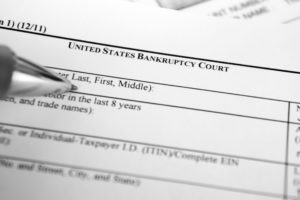 Mortgage servicers are plagued by their nebulous relationships with the borrowers who discharge their personal liability in bankruptcy. Issues arise when the borrower whose debt has been discharged continues to engage with the mortgage servicer. These activities include making monthly payments and requesting and participating in loss mitigation. There are few, if any, bright line rules regarding this common scenario. Instead, courts generally employ an “I know it when I see it” approach to evaluate whether such activity violates the discharge injunction and/or the Fair Debt Collection Practices Act.
Mortgage servicers are plagued by their nebulous relationships with the borrowers who discharge their personal liability in bankruptcy. Issues arise when the borrower whose debt has been discharged continues to engage with the mortgage servicer. These activities include making monthly payments and requesting and participating in loss mitigation. There are few, if any, bright line rules regarding this common scenario. Instead, courts generally employ an “I know it when I see it” approach to evaluate whether such activity violates the discharge injunction and/or the Fair Debt Collection Practices Act.
This is the first post in our four-part series where we will address issues that arise when servicing discharged debt, including credit reporting and loan modifications. Case law and regulatory guidance do not provide crystal clear answers, yet the sanctions and damages highlight the risk of engaging with discharged borrowers. Decisions regarding how to service these accounts should be determined based on the company’s risk tolerance in light of the potential liability and the fact-based nature of these cases. This series will highlight some of the risks, as well as the minimal guidance surrounding these issues.
Chapter 7
A Chapter 7 debtor has several options regarding real property. The Bankruptcy Code provides three specific options: (1) redeem the loan by paying it off, (2) surrender the property, or (3) reaffirm the loan and agree to be personally liable for the debt while maintaining ownership and possession of the property. For debtors who are current on their loan and have filed in certain jurisdictions, a fourth option also exists: a ride-through loan. A real property ride-through loan in bankruptcy converts a mortgage into a non-recourse obligation, meaning the filer chooses neither to redeem, surrender, nor reaffirm the loan. There is no nationally accepted official form or procedure for electing the ride-through in the statement of intention, but some debtors using this option have made it a practice to write in their own fourth option by stating an intention to have their loan ride through the bankruptcy instead of choosing to redeem, surrender or reaffirm.
Chapter 13
Most Chapter 13 debtors elect to file a Chapter 13 case, as opposed to Chapter 7, to keep their home and catch up on past due mortgage payments. However, some Chapter 13 debtors elect to surrender their property via their bankruptcy plan. Similar to a surrender in the Chapter 7 context, this results in a discharge of personal liability of the mortgage debt upon entry of the discharge. Poorly written plans that remain in effect may also result in a discharge of personal liability. For instance, if a borrower indicates that they intend to cramdown the value of the claim to the value of the property, but do not end up paying the entire claim over the life of the plan, the servicer may be stuck with a claim against the property but with no recourse against the borrower personally if the case later discharges.
Discharge of Personal Liability
The Chapter 7 discharge relieves individual debtors from personal liability of mortgage debt and prevents the creditor from taking any collection actions against the debtor personally (unless the debt was reaffirmed). A Chapter 13 discharge following surrender of property and the limited instances described above operates in a similar manner. However, while the debt becomes non-recourse to the debtor, the security interest (i.e., servicer’s right to proceed in rem against the property) survives the discharge. This surviving mortgage interest corresponds to an obligation of the debtor who wishes to retain possession of the property. Accordingly, while preserving the creditor’s right to proceed in rem, Congress has allowed creditors to retain the ability to take certain actions with the respect to the mortgage outside of foreclosure.
In 2005, Congress enacted 11 U.S.C. § 524(j), which excludes ordinary course of business activities where a creditor holding a secured claim in the debtor’s principal residence seeks to collect periodic payments in lieu of pursuit of in rem relief to enforce the lien. This limited safe harbor is not a bulletproof vest against discharge injunction violations arising from communications relating to collecting payments and/or other servicing costs. If servicers elect to accept payments in lieu of foreclosing on the property post-discharge, it is critical to ensure that all servicing activity, particularly communications, are narrowly tailored to eliminate the risk that these activities are viewed as coercive, and that any attempts to collect payment only inform of, rather than demand, payments. Sanctions and damages for discharge injunction violations range from minor slaps on the wrist to millions of dollars based on the particular facts of the case.
Part II of this series will discuss communications to discharged borrowers and evaluate various disclaimers that can be utilized, including how courts have reacted to such disclaimers.